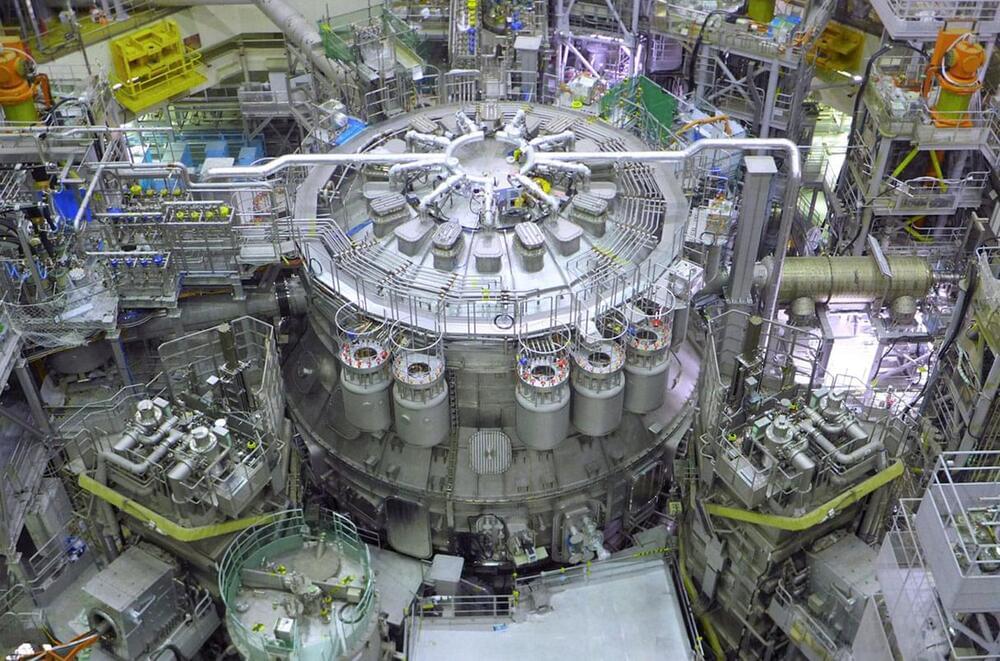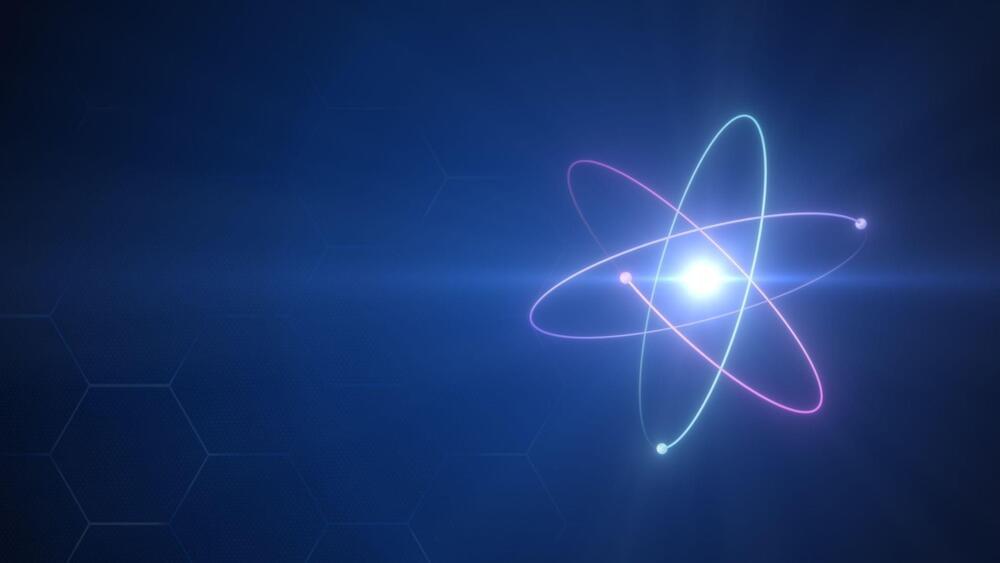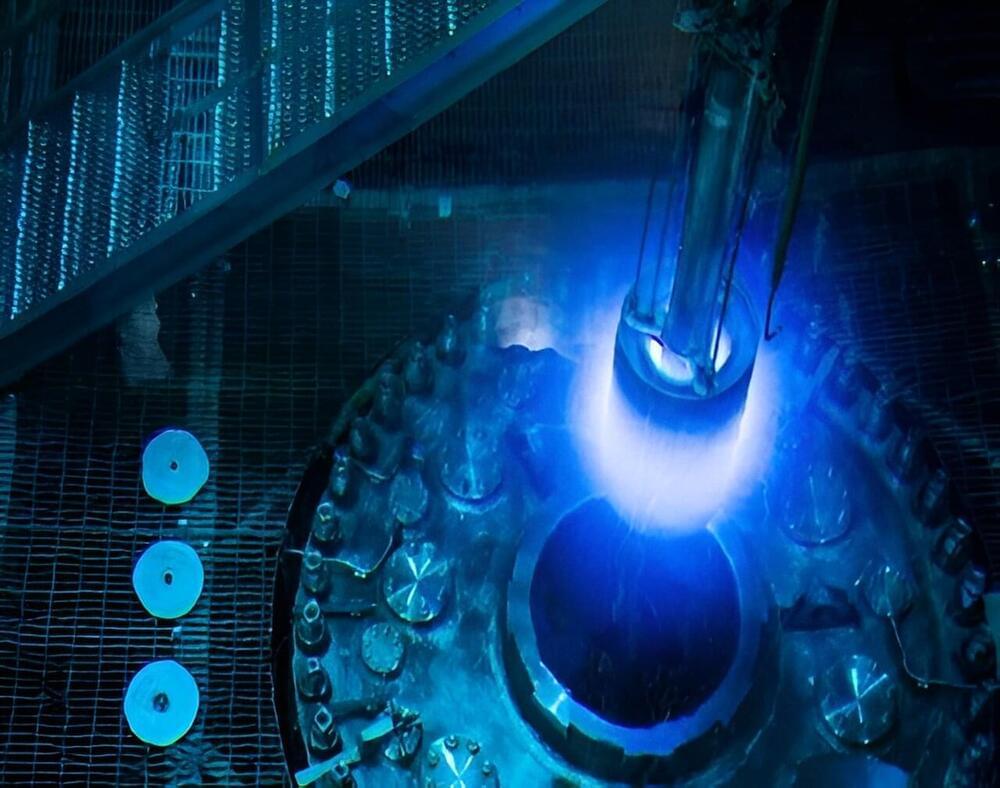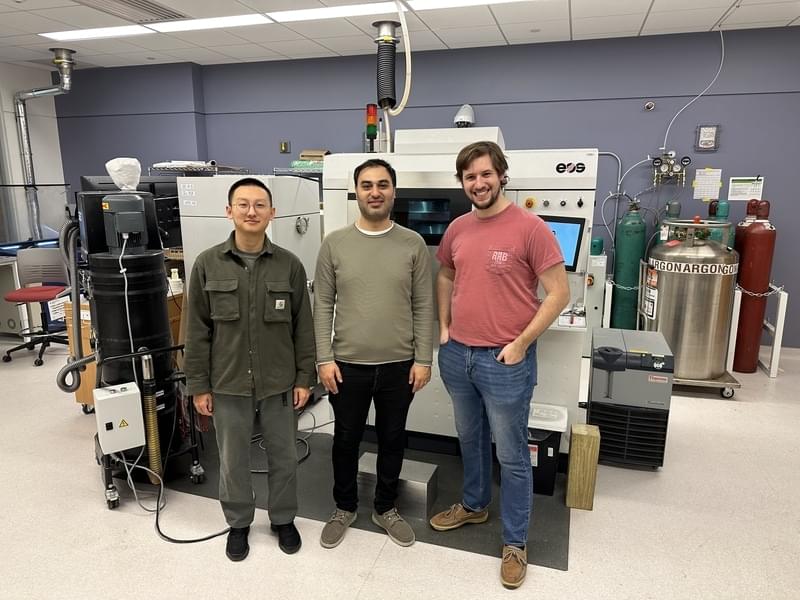Japan’s JT-60SA tokamak will test technologies put to use in ITER.




Nuclear fusion holds the promise to generate energy in a clean, safe, and nearly inexhaustible way. The physical idea of fusion involves confining fuels at unearthly temperatures of approximately 150,000,000 degree Celsius which fusion reactions between atomic nuclei can happen. The fuels of interest, deuterium and tritium (isotopes of hydrogen), exist in the state of plasma. Clearly, containing these extremely hot plasmas with solid walls is unfeasible.
A plasma is an ionised gas comprising charged particles, both ions and electrons. Fortunately, the dynamics of charge particles are subject to constraints along magnetic field lines. This insight forms the basis of our current approach: constructing a magnetic bottle using powerful magnetic fields that effectively trap the plasma along these intangible field lines.
One of the most iconic magnetic confinement machine designs is the tokamak — a toroidally-shaped device, often likened to a doughnut. The name ‘tokamak’ is derived from the Russian acronym for ‘to roidal cha mber with ma gnetic c oils.’

The neutrino, one of nature’s most elusive and least understood subatomic particles, rarely interacts with matter. That makes precision studies of the neutrino and its antimatter partner, the antineutrino, a challenge. The strongest emitters of neutrinos on Earth—nuclear reactors—play a key role in studying these particles. Researchers have designed the Precision Reactor Oscillation and Spectrum Experiment (PROSPECT) for detailed studies of electron antineutrinos coming from the core of the High Flux Isotope Reactor (HFIR).
Now the PROSPECT research collaboration has reported the most precise measurement ever of the energy spectrum of antineutrinos emitted from the fission of uranium-235 (U-235). These results provide scientists with new information about the nature of these particles.
PROSPECT’s collaborators represent more than 60 participants from 13 universities and four national laboratories. They built a novel antineutrino detector system and installed it with extensive, tailored shielding against background at the HFIR research reactor, a Department of Energy (DOE) Office of Science user facility at Oak Ridge National Laboratory. The research focuses on antineutrinos emerging from the fission of U-235. Produced by nuclear beta decay, antineutrinos are antimatter-particle counterparts to neutrinos.

Chinese scientists claim they’ve had unexpected success in developing a high-powered microwave (HPM) weapon, according to The Diplomat. The magazine notes that in January, Huang Wenhua, deputy director of China’s Northwest Institute of Nuclear Technology, was awarded for his research on directed energy, which HPM weapons use.
HPM systems are able to destroy electronic equipment, and in an age when most combat systems—from tanks to planes, radios to satellites—rely on electronics, the weapons could change the way wars are fought. Warships will be fitted with HPM weapons to intercept incoming missiles.
The HPM project, alongside other projects involving lasers and electromagnetic pulses, is part of the Chinese regime’s “Assassin’s Mace” (or “Trump Card”) program designed to defeat a technologically superior opponent by disabling or destroying the technology that makes the opponent superior.

Ceramic nanowires could essentially be used even for car tires reducing even hazardous rubber waste.
A team of MIT-led engineers found a simple, inexpensive way to strengthen Inconel 718 with ceramic nanowires to be used in metal PBF AM processes. The team believes that their general approach could be used to improve many other materials. “There is always a significant need for the development of more capable materials for extreme environments. We believe that this method has great potential for other materials in the future,” said Ju Li, the Battelle Energy Alliance Professor in Nuclear Engineering and a professor in MIT’s Department of Materials Science and Engineering (DMSE).
Li, who is also affiliated with the Materials Research Laboratory (MRL), is one of three corresponding authors of a paper on the work that appeared in the April 5 issue of Additive Manufacturing. The other corresponding authors are Professor Wen Chen of the University of Massachusetts at Amherst and Professor A. John Hart of the MIT Department of Mechanical Engineering.
Co-first authors of the paper are Emre Tekoğlu, an MIT postdoc in the Department of Nuclear Science and Engineering (NSE); Alexander D. O’Brien, an NSE graduate student; and Jian Liu of UMass Amherst. Additional authors are Baoming Wang, an MIT postdoc in DMSE; Sina Kavak of Istanbul Technical University; Yong Zhang, a research specialist at the MRL; So Yeon Kim, a DMSE graduate student; Shitong Wang, an NSE graduate student; and Duygu Agaogullari of Istanbul Technical University. The study was supported by Eni S.p. A. through the MIT Energy Initiative, the National Science Foundation, and ARPA-E.

The supercomputer which is under construction is 50 times more powerful that existing supercomputer at the facility.
The world’s most powerful supercomputer, Aurora, is being set up in the US to help scientists at the Argonne National Laboratory (ANL) simulate new nuclear reactors that are more efficient and safer than their predecessors, a press release said.
The US is already home to some of the world’s fastest supercomputers, as measured by TOP500. These supercomputers can be tasked with a variety of computational roles. Last month, Interesting Engineering reported how the Los Alamos National Laboratory (LANL) planned to use a supercomputer to check nuclear stockpiles for the US military.

Researchers of the Princeton Plasma Physics Laboratory (PPPL) announced the discovery of a promising approach to mitigate the damaging effects of runaway electrons in tokamak fusion devices in a statement.
The key to this discovery lies in harnessing a unique type of plasma wave known as Alfvén waves, named after the renowned astrophysicist Hannes Alfvén, a Nobel laureate in 1970.
Alfvén waves have long been recognized for their ability to loosen the confinement of high-energy particles within tokamak reactors— a type of fusion reactor that confines plasma in the shape of a donut using a magnetic field.

face_with_colon_three Year 2017
A paper recently published in the journal Nuclear Engineering and Technology demonstrated the feasibility of using graphene to control hydrogen isotopes, specifically tritium.
Study: Adsorption of Hydrogen Isotopes on Graphene. Image Credit: Rost9/Shutterstock.com
Background
Tritium, a fast-decaying radioelement of hydrogen with one proton and two neutrons, is produced by nuclear reactors and by the interaction between cosmic rays and atmospheric particles. Tritium beta can diffuse through several materials, has 12.35 years half-life, and decays into helium-3.

O.0!!!!
DARPA is our favorite source for off-the-wall yet compelling technology. We’ve seen proposals for flying cars, handheld nuclear fusion devices, and now poop-powered nuclear reactors. It’s not as crazy at seems.
Wired explains that there would be multiple benefits to sticking portable, poop-powered reactors at military bases. The reactors could eliminate human waste (and the need to dispose of it) at the same time as they reduce the need to scrounge up pricey fuel sources. And since people never stop pooping, potential fuel is virtually limitless.
DARPA’s portable nuclear device doesn’t exist yet–the agency is currently soliciting design concepts. Want to apply? DARPA asks that generator designs produce 15,000 gallons per day of fuel and support an electrical load of 5 to 10 MW. The design should also be inherently safe. That means human waste shouldn’t go flying everywhere if something goes wrong with the reactor. If DARPA finds what it is looking for, perhaps the agency should consider tipping off Bill Gates and Toshiba–they’re also working on hot tub-sized nuclear reactors.